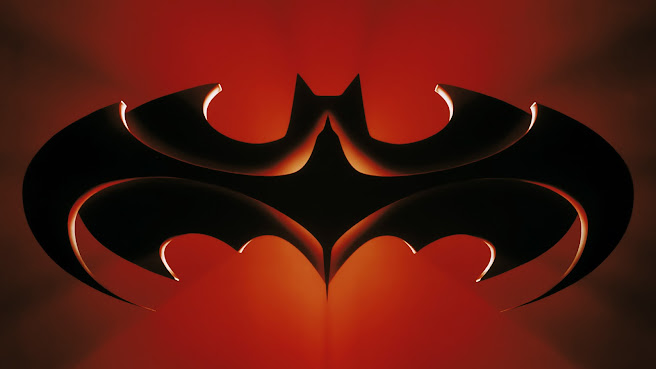The Evolution of the Batman Logo: A Symbol of Justice and Legacy
Introduction
The Batman logo stands as an iconic symbol recognized worldwide, representing the Dark Knight's enduring legacy and the embodiment of justice. Over the years, this emblem has undergone various transformations, reflecting the evolution of the character and the cultural shifts that have shaped the world of comics and entertainment. From its humble beginnings in the pages of comic books to its omnipresence in pop culture, the Batman logo has become more than just a graphic design; it is a visual representation of a complex character's journey.
The Birth of a Symbol
The first appearance of Batman dates back to 1939 in Detective Comics #27, where the character was introduced by artist Bob Kane and writer Bill Finger. The inaugural Batman logo was a simple yet striking design featuring bat wings spread against a yellow ellipse. This early rendition set the foundation for what would become one of the most recognizable symbols in popular culture.
During the Golden Age of Comics, Batman's emblem underwent subtle changes, but the basic elements remained intact. The logo symbolized the mysterious and nocturnal nature of the caped crusader, evoking an aura of fear and intrigue. It was a time when comic book superheroes were rising in popularity, and their symbols became integral to their identities.
The Dark Knight Returns: A New Dawn for the Logo
As the comic book industry evolved, so did the Batman logo. One of the most significant moments in Batman's history came with the release of Frank Miller's seminal graphic novel, "The Dark Knight Returns," in 1986. This groundbreaking work not only rejuvenated interest in the character but also introduced a new and more stylized Batman logo.
Miller's logo retained the essence of the original but added a sense of dynamism and modernity. The bat wings became sharper, and the yellow ellipse was replaced by a bold black background. This new design reflected the grittier and more mature tone of Miller's narrative, ushering in a new era for Batman and his iconic symbol.
The Birth of the Batfleck Logo
The cinematic adaptation of Batman has played a pivotal role in shaping the character's visual identity. When Ben Affleck took on the role of the Dark Knight in Zack Snyder's "Batman v Superman: Dawn of Justice" (2016), a new Batman logo accompanied this fresh interpretation.
The Batfleck logo was characterized by a larger bat insignia with shorter, thicker wings. The black-on-gray color scheme added a sense of realism and gravitas, aligning with the darker tone of the DC Extended Universe (DCEU). This logo not only symbolized a new chapter for Batman on the big screen but also sparked conversations about the character's adaptability across various mediums.
The Legacy Continues: Nolan's Trilogy and Beyond
Christopher Nolan's "The Dark Knight Trilogy" (2005-2012) further contributed to the evolution of the Batman logo. In this iteration, the emblem underwent subtle changes, emphasizing practicality and functionality. Christian Bale's Batman featured a streamlined logo that seamlessly integrated into his armored suit, reflecting Nolan's commitment to grounding the character in a more realistic setting.
The Nolan trilogy showcased the adaptability of the Batman logo, proving its ability to evolve while retaining its core symbolism. This adaptability has been a key factor in Batman's enduring popularity and cultural relevance.
The Bat-Signal: A Symbol of Hope
While not the traditional representation of the Batman logo, the Bat-Signal is an integral part of Batman's iconography. Introduced in Detective Comics #60 (1942), the Bat-Signal is a beacon of hope for the citizens of Gotham City and a call to action for the Dark Knight. Its distinctive bat shape against the night sky has become synonymous with Batman's commitment to justice.
The Bat-Signal has transcended the comic book pages, making its way into various adaptations, including television series and films. Its enduring presence underscores the significance of symbols in storytelling and their power to resonate with audiences across different mediums.
Merchandising and Cultural Impact
Beyond comics and films, the Batman logo has permeated various aspects of popular culture through extensive merchandising. T-shirts, posters, toys, and other merchandise proudly display the iconic emblem, turning it into a cultural phenomenon.
The widespread use of the Batman logo in everyday items not only generates revenue for the franchise but also reinforces its status as a symbol that transcends the boundaries of fiction. Fans proudly wear the emblem, expressing their affinity for the character and contributing to the enduring legacy of the Dark Knight.
Conclusion: The Everlasting Symbol of Justice
In conclusion, the Batman logo stands as a testament to the character's enduring legacy and cultural impact. From its humble beginnings in the pages of comic books to its evolution across various media, the emblem has adapted to the changing times while retaining its core symbolism. Whether it's the classic design from the Golden Age, the gritty iteration from "The Dark Knight Returns," or the modern adaptations in cinema, the Batman logo remains an iconic symbol that resonates with fans worldwide.
As Batman continues to evolve in the ever-expanding landscape of comics, films, and beyond, the logo will undoubtedly undergo further transformations, each iteration adding a new layer to the character's rich narrative. The Dark Knight's emblematic insignia will continue to serve as a visual representation of justice, inspiring generations to come and solidifying Batman's place as one of the most enduring and iconic superheroes in popular culture.

.jpg)

Comments
Post a Comment